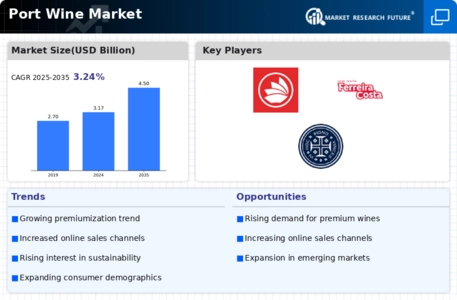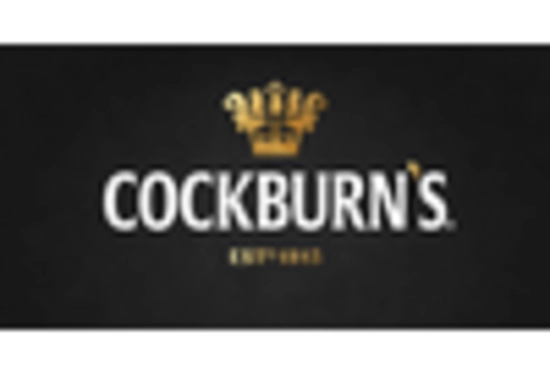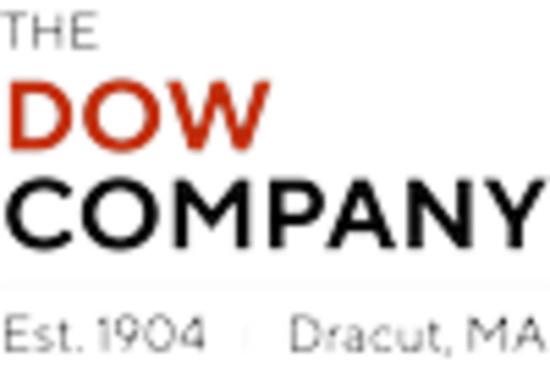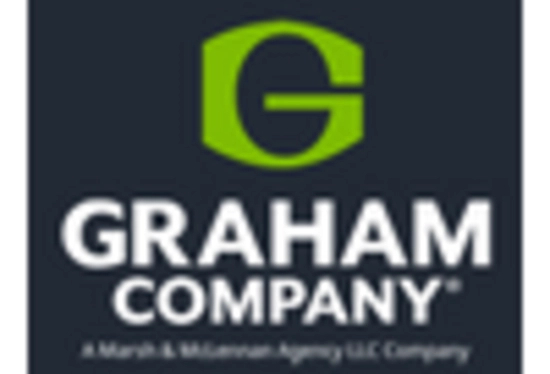E-commerce Growth in Wine Sales
The Port Wine Market is witnessing a significant transformation due to the rise of e-commerce platforms. Online sales of wine, including Port, have surged, with estimates suggesting that e-commerce now represents over 20% of total wine sales. This shift is attributed to changing consumer preferences, as more individuals opt for the convenience of purchasing wine online. E-commerce allows for greater accessibility to a diverse range of Port wines, catering to both novice and connoisseur consumers. Additionally, the digital landscape enables wineries to reach a broader audience, enhancing brand visibility and customer engagement. As this trend continues, the Port Wine Market is likely to see increased competition and innovation in online retail strategies.
Growing Interest in Wine Tourism
Wine tourism is emerging as a significant driver for the Port Wine Market, as more consumers seek immersive experiences related to wine production. Regions known for Port wine, such as the Douro Valley, are becoming popular destinations for tourists. This trend is supported by data indicating that wine tourism contributes approximately 10% to the overall revenue of the wine industry. Visitors are not only purchasing Port wines during their travels but are also participating in tastings and vineyard tours, which enhances their appreciation for the product. This growing interest in wine tourism is likely to bolster the Port Wine Market, as it fosters a deeper connection between consumers and the heritage of Port wine production.
Rising Demand for Premium Port Wines
The Port Wine Market experiences a notable increase in demand for premium and super-premium wines. Consumers are increasingly seeking high-quality products, which has led to a shift in purchasing behavior. According to recent data, the premium segment accounts for approximately 40% of total Port wine sales, indicating a robust trend towards luxury consumption. This shift is driven by a growing appreciation for artisanal production methods and unique flavor profiles. As consumers become more discerning, they are willing to pay a premium for exceptional quality, thereby enhancing the overall value of the Port Wine Market. This trend is likely to continue, as the younger demographic shows a preference for premium offerings, further solidifying the market's trajectory towards high-end products.
Sustainability and Eco-Friendly Practices
Sustainability initiatives are becoming increasingly relevant within the Port Wine Market, as consumers show a preference for environmentally friendly products. Wineries are adopting eco-friendly practices, such as organic farming and sustainable packaging, to appeal to this growing demographic. Data suggests that approximately 30% of consumers are willing to pay more for sustainably produced wines, indicating a shift in purchasing priorities. This trend not only enhances brand loyalty but also positions wineries as responsible stewards of the environment. As sustainability becomes a core value for consumers, the Port Wine Market is likely to see a rise in demand for wines that align with these principles, potentially reshaping production and marketing strategies.
Health Consciousness and Moderate Consumption
The Port Wine Market is influenced by a rising trend in health consciousness among consumers. Research indicates that moderate consumption of wine, including Port, is associated with certain health benefits, such as improved cardiovascular health. This perception is encouraging consumers to enjoy Port wine in moderation, rather than abstaining altogether. As a result, the market is seeing a shift towards smaller packaging options, such as half-bottles, which cater to health-conscious individuals who prefer to limit their intake. This trend may lead to an increase in the overall consumption of Port wine, as it aligns with a lifestyle that promotes moderation and enjoyment. Consequently, the Port Wine Market could benefit from this evolving consumer mindset.


















Leave a Comment